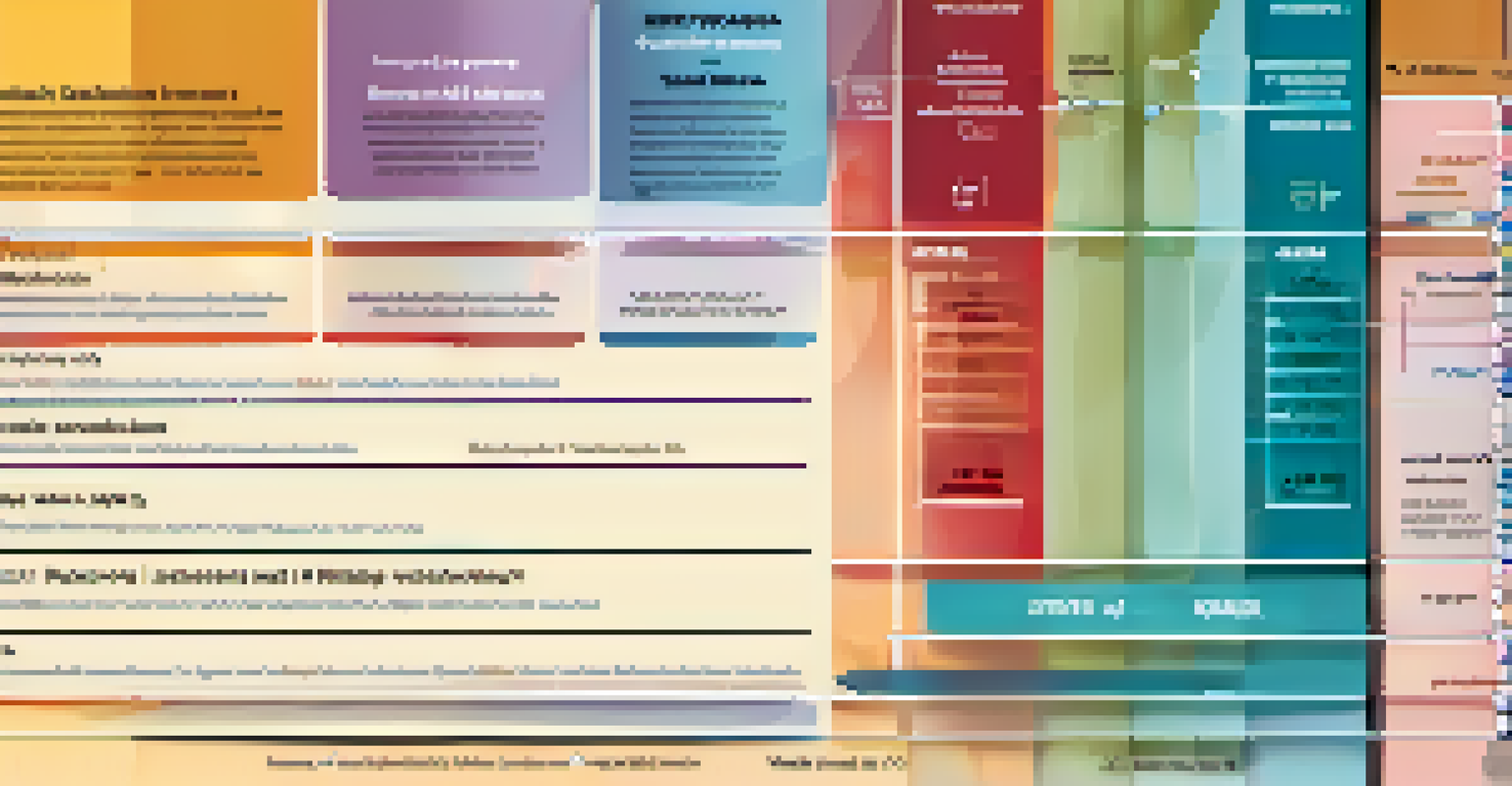How to Read Your W-2: A Simple Breakdown for Everyone

What is a W-2 and Why is it Important?
The W-2 form is a key document that your employer sends you each year, summarizing your income and taxes withheld. It's essential for filing your taxes accurately and understanding your financial situation. Think of it as a report card for your earnings and withholdings.
The hardest thing in the world to understand is the income tax.
Each year, you receive a W-2 if you’ve earned wages from an employer, making it a vital piece of paperwork during tax season. Without it, filing your taxes can get tricky, leading to potential errors or missed deductions. So, it's crucial to familiarize yourself with its contents.
In essence, the W-2 is your financial snapshot for the year, helping you track how much you earned and how much tax you’ve already paid. Understanding this form can empower you to take control of your finances and ensure you’re not leaving money on the table come tax time.
Where to Find Your W-2
You typically receive your W-2 by the end of January, either by mail or electronically. If your employer offers online access, you can conveniently download it from their payroll portal. Keep an eye on your mailbox and email to ensure you don’t miss it!

If you haven’t received your W-2 by mid-February, it’s a good idea to reach out to your employer’s HR or payroll department. Sometimes, forms can get lost in the mail or delayed, and you don’t want to be scrambling right at tax time. A simple follow-up can save you a lot of stress.
W-2 Form: Key for Tax Filing
The W-2 form is essential for accurately filing your taxes and understanding your financial situation.
Remember, if you had multiple jobs throughout the year, you’ll receive a separate W-2 from each employer. This might feel like a lot to manage, but keeping all your W-2 forms organized will help streamline the filing process.
Decoding the Boxes on Your W-2
Your W-2 comprises several boxes, each containing specific information about your earnings and withholdings. Box 1 shows your total taxable income, while other boxes detail federal income tax withheld, Social Security wages, and Medicare wages. Understanding what each box represents is crucial for accurately filing your tax return.
It's not how much money you make, but how much money you keep, how hard it works for you, and how many generations you keep it for.
For example, Box 2 reflects the amount of federal tax withheld based on your earnings. This is essentially pre-paid tax, which can either result in a refund or amount owed when you file your taxes. By knowing what each box means, you can better gauge your tax situation.
It’s also important to note that not all income is taxable, which is why some amounts in Box 1 might differ from what you actually earned. This could include pre-tax contributions to retirement accounts or health insurance premiums, which can reduce your taxable income.
Understanding Your Tax Withholdings
Tax withholdings can often feel like a mysterious part of your paycheck, but they play a significant role in how much you owe come tax season. Your W-2 helps you understand how much tax was withheld throughout the year, which can directly affect your refund or tax bill.
For instance, if you had too much withheld, you might receive a nice refund, which can feel like a bonus. Conversely, if too little was withheld, you may owe taxes, which can be a surprise. It’s essential to keep tabs on these figures to avoid any unexpected financial hits.
Check for W-2 Errors
It's crucial to review your W-2 for any errors to avoid complications with the IRS when filing your taxes.
By reviewing your W-2 and understanding your withholdings, you can make adjustments for the following year. This might mean updating your W-4 form with your employer to ensure that the right amount is withheld based on your current financial situation.
State and Local Tax Information on Your W-2
In addition to federal income tax, your W-2 may also include information about state and local taxes. These are listed in their respective boxes, helping you understand your obligations beyond federal taxes. If you live in a state with income tax, this information is crucial for your state tax return.
For example, Box 17 shows the state wages, while Box 19 displays any local wages if applicable. If you’ve moved states during the year, you might have W-2s from different states, which can complicate your tax filing. However, it’s manageable with a little organization.
Understanding these details helps you ensure compliance with both state and local tax laws, which can vary significantly. Ignoring these taxes can lead to penalties, so it’s best to be informed and prepared.
Checking for Errors on Your W-2
Once you receive your W-2, it’s imperative to double-check it for any errors. A single mistake, such as a misspelled name or incorrect Social Security number, can lead to significant headaches when filing your taxes. An error can delay your refund or lead to complications with the IRS.
If you spot an error, contact your employer immediately to request a corrected W-2, also known as a W-2c. It’s better to address these discrepancies sooner rather than later to avoid issues down the line. Keeping the lines of communication open with your employer is vital.
Understanding Tax Withholdings
Your W-2 helps you understand tax withholdings, allowing you to make adjustments for the following year.
Taking the time to review your W-2 thoroughly can save you from potential tax troubles. Remember, you’re ultimately responsible for the information you report to the IRS, so don’t overlook this crucial step!
Using Your W-2 for Tax Filing
When it comes time to file your taxes, your W-2 is a critical document you'll need to reference. Most tax preparation software allows you to input the information directly from your W-2, making the process smoother. This ensures that all your income and withholdings are accurately reported.
If you’re working with a tax professional, be sure to provide them with your W-2 early on. This way, they can help you identify potential deductions or credits based on your income and tax situation. Having this form on hand can streamline the entire tax filing process.

Ultimately, your W-2 serves as the backbone of your annual tax return. It's your go-to guide for ensuring that you report your income correctly and take advantage of any available tax benefits.